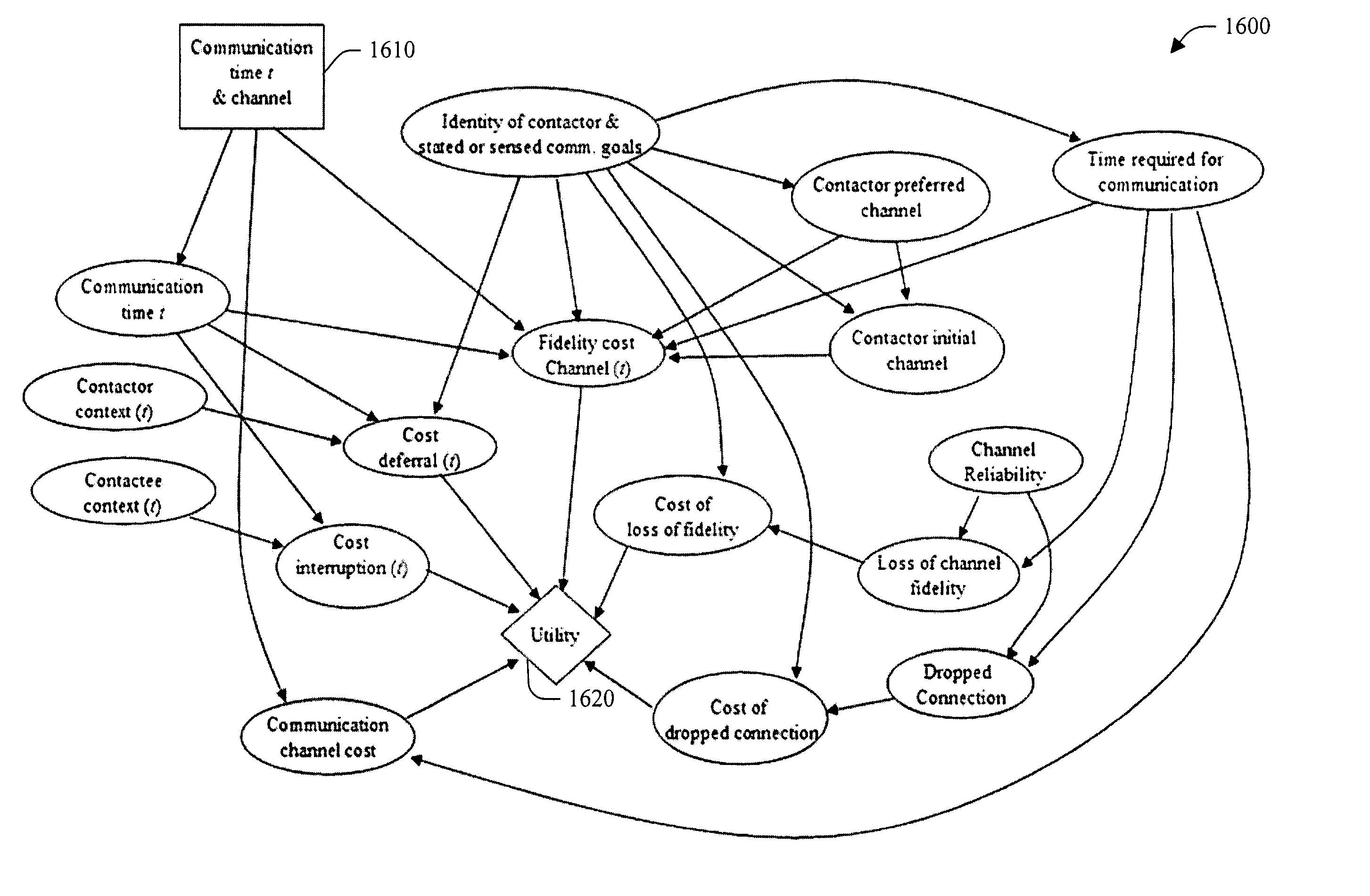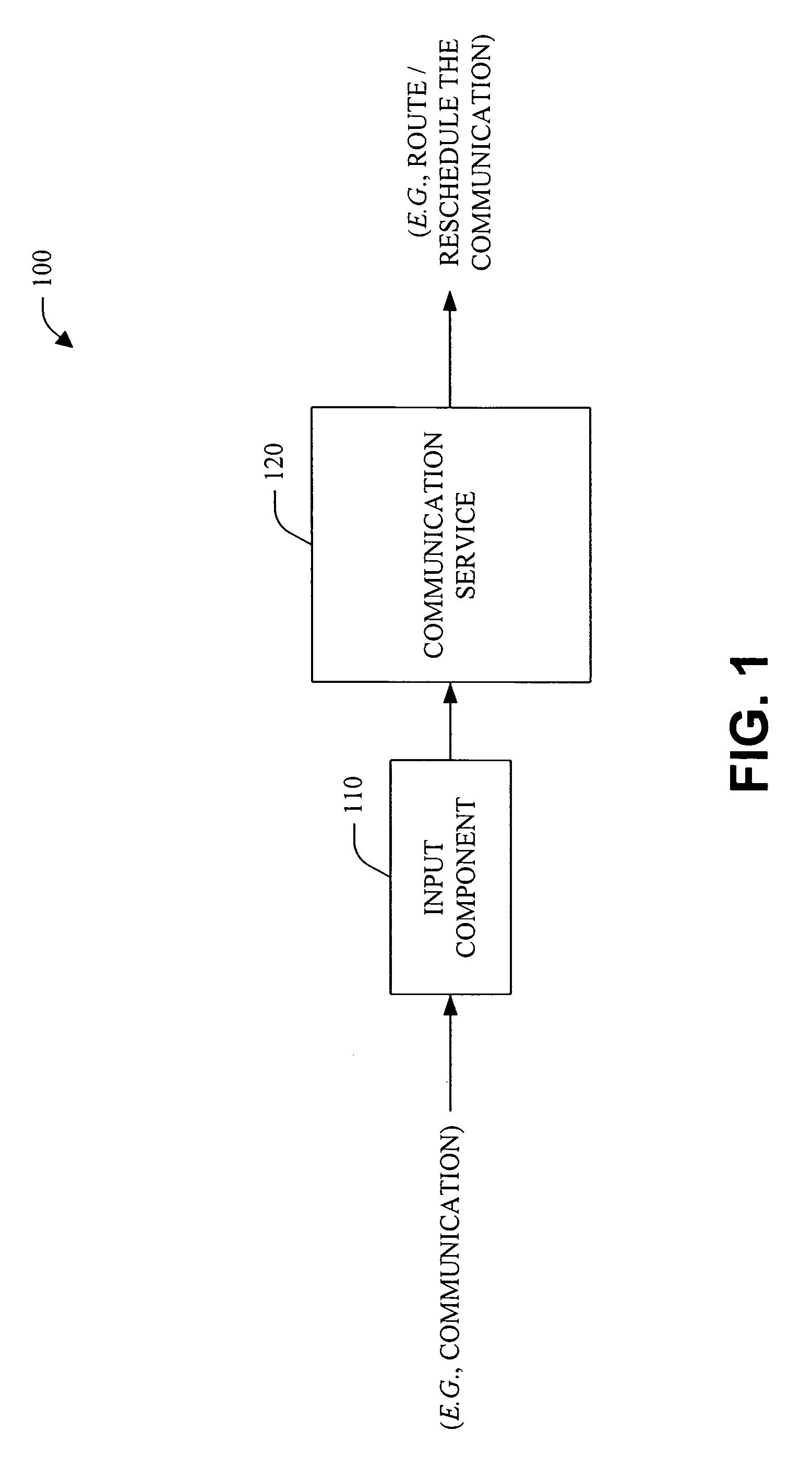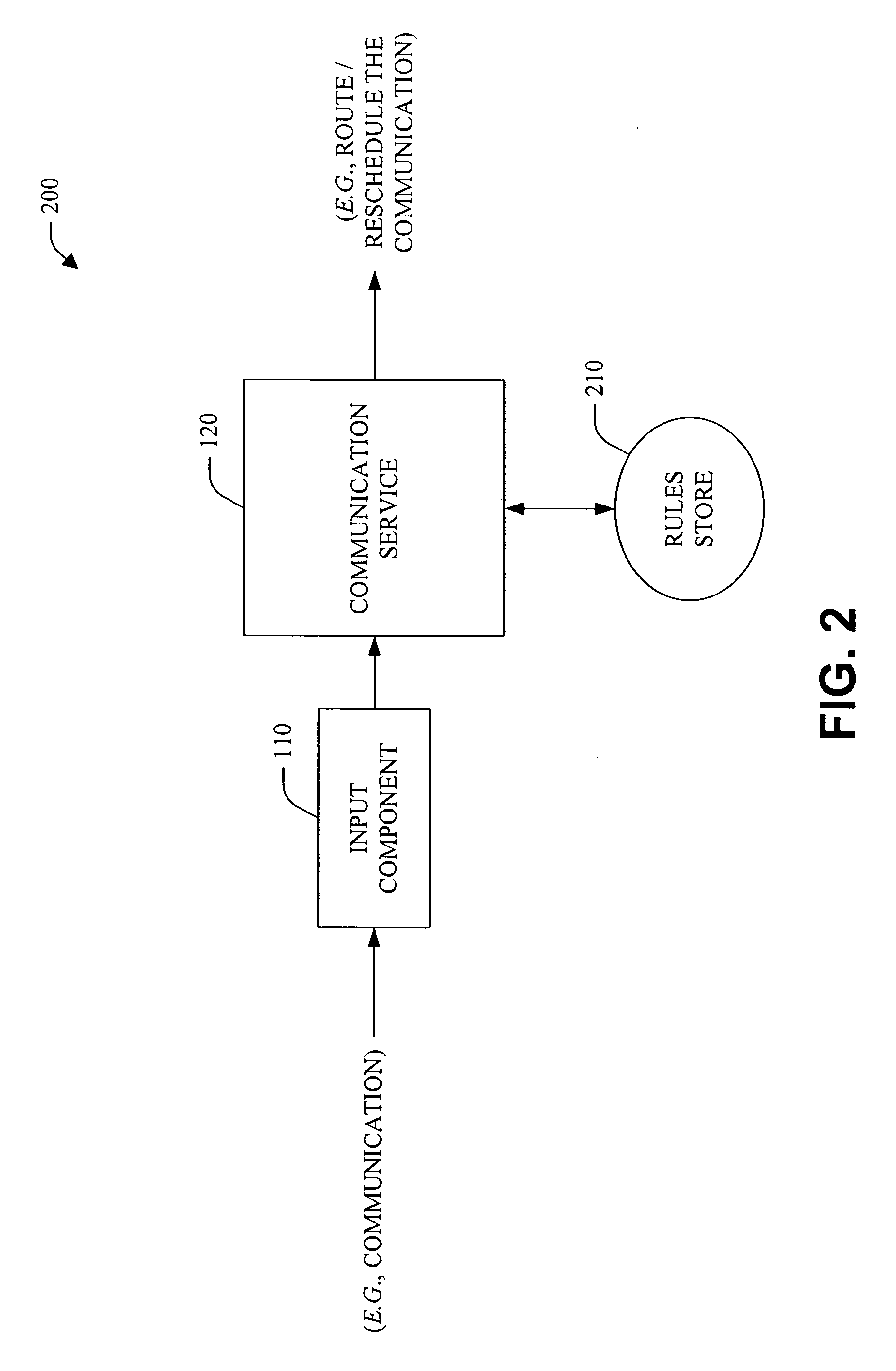Designs, interfaces, and policies for systems that enhance communication and minimize disruption by encoding preferences and situations
a technology of preferences and situations, applied in the field of communication systems, can solve the problems of limiting or deferring real-time communication, limiting or delaying contact, and knowing a user's status does not necessarily aid future or desired collaboration between communicating parties, so as to enhance interpersonal communication and maximize communication valu
- Summary
- Abstract
- Description
- Claims
- Application Information
AI Technical Summary
Benefits of technology
Problems solved by technology
Method used
Image
Examples
Embodiment Construction
[0049] The present invention relates to systems and methods that automate and semi automate communication handling amongst parties (e.g., contactors and contactees). The systems and methods consider communication preferences, state of the contactees and the contactors, and cost of interruption to enhance interpersonal communication and maximize communication value. The foregoing provides for improvements over conventional systems via a centrality of assessing and reasoning about rich representations of preferences about communications and leveraging principles of cost-benefit analysis and decision theory under uncertainty for communication handling actions.
[0050] It is to be appreciated that as utilized herein, the term “component” is intended to refer to a computer-related entity, either hardware, a combination of hardware and software, software, or software in execution. For example, a component can be, but is not limited to being, a process running on a processor, a processor, a...
PUM
 Login to View More
Login to View More Abstract
Description
Claims
Application Information
 Login to View More
Login to View More - R&D
- Intellectual Property
- Life Sciences
- Materials
- Tech Scout
- Unparalleled Data Quality
- Higher Quality Content
- 60% Fewer Hallucinations
Browse by: Latest US Patents, China's latest patents, Technical Efficacy Thesaurus, Application Domain, Technology Topic, Popular Technical Reports.
© 2025 PatSnap. All rights reserved.Legal|Privacy policy|Modern Slavery Act Transparency Statement|Sitemap|About US| Contact US: help@patsnap.com



